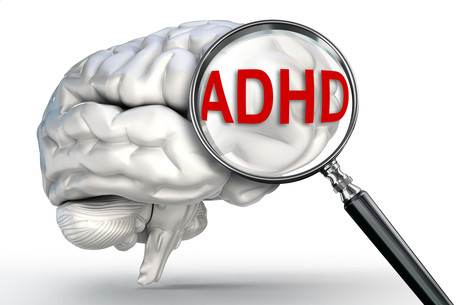ADHD preschoolers have reduced brain volume

Preschoolers with attention deficit hyperactivity disorder (ADHD) symptoms have reduced brain volumes in areas essential for behavioural control, according to a new study.
Published in the Journal of the International Neuropsychological Society, the study examined children as young as four years old with ADHD symptoms, and found they had significantly reduced brain volume across multiple regions of the cerebral cortex, including the frontal, temporal and parietal lobes. The brain regions showing greatest ADHD-related reductions included those known to be critical for cognitive and behavioral control and predictability of behavioural symptoms.
Using high-resolution anatomical MRI scans along with cognitive and behavioural measures, researchers from Kennedy Krieger Institute studied the brain development of 90 medication-naïve preschoolers between the ages of 4 and 5 years. The study represents the first comprehensive examination of cortical brain volume in preschool children with ADHD, providing an indication that anomalous brain structure is evident in the early stages of development.
“These findings confirm what parents have known for a while — even in very young children, ADHD is a real biological condition with pronounced physical and cognitive manifestations,” said Dr Mark Mahone, study author and research scientist at the Kennedy Krieger Institute.
ADHD is the most commonly diagnosed form of psychopathology during the preschool years, and during early childhood it is associated with significant long-term health and economic costs. To date, studies assessing structural brain development in children with ADHD have examined school-aged samples, despite most children with the disorder showing symptoms early in the preschool years. This study carefully identified children with symptoms of ADHD closer to their onset, allowing for better understanding of the brain mechanisms associated with the onset of the condition.
“MRI research in children can be challenging — particularly so for young children with ADHD — as it requires them to lie still for periods up to 30–40 minutes,” said Dr Mahone. “To address this challenge, we employed an individualised behavioural desensitisation procedure using a mock scanner to help prepare the children for the scans, leading to a nearly 90% success rate.”
These findings represent the first phase of a study that will follow a preschool age cohort into adolescence, in hopes of identifying early biological signs in preschool years that can help predict which children are most at risk for developing ADHD.
“Our hope is that by following these children from early on in life, we will be able to determine which early brain and behavioural signs are most associated with later difficulties or, even better, which aspects of early development can predict better outcome and recovery from the condition,” said Dr Mahone. “By understanding the brains of children who grow into the disorder as well as those who grow out of it, we can begin to implement targeted, preventative interventions in young children with the goal of reducing adverse outcomes or even reversing the course of this condition.”
$1bn vaccine and antivenom manufacturing facility opens
A $1 billion cell-based influenza vaccine and antivenom manufacturing facility has opened in...
National concussion clinical guidelines now available
The first Australia- and New Zealand-specific guidelines for all forms of concussion — from...
Doctors criticise "risky prescribing agenda"
The AMA and RACGP have expressed disappointment in the Pharmacy Board of Australia's...

![[New Zealand] Transform from Security Awareness to a Security Culture: A Vital Shift for SMB Healthcare — Webinar](https://d1v1e13ebw3o15.cloudfront.net/data/89856/wfmedia_thumb/..jpg)
![[Australia] Transform from Security Awareness to a Security Culture: A Vital Shift for SMB Healthcare — Webinar](https://d1v1e13ebw3o15.cloudfront.net/data/89855/wfmedia_thumb/..jpg)




